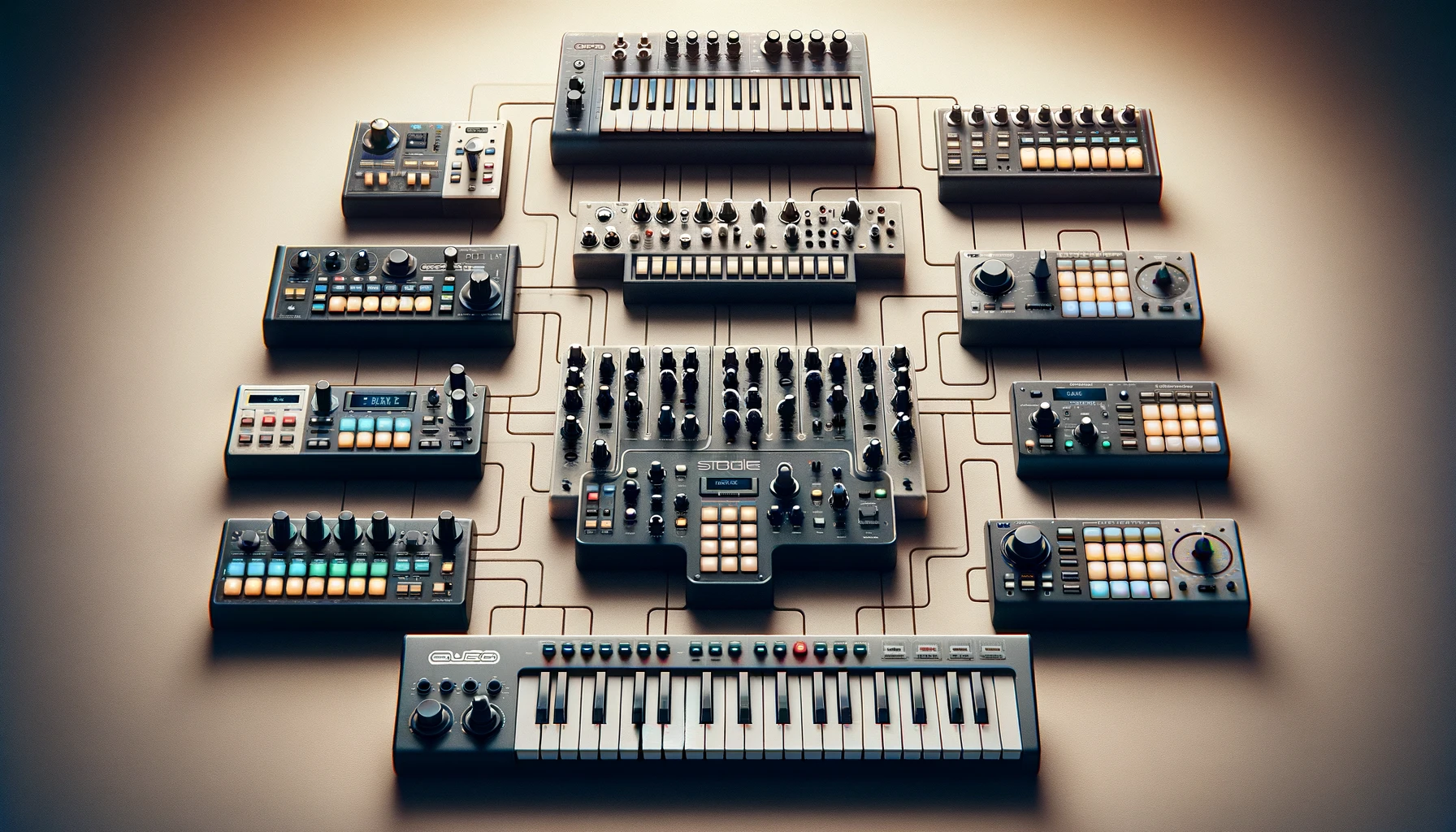The first MIDI controller hit the market in 1983—but do you know the revolutionary impact it had on music production?
The release of the Six-Trak MIDI keyboard controller by Sequential Circuits allowed intuitive sound manipulation and ushered in a new era of tactile music software control.
Let’s explore the history behind this influential first MIDI controller and its legacy.
The Birth of the MIDI Controller
The first commercial MIDI controller, Sequential Circuits’ Six-Trak keyboard, arrived in 1983.
This landmark release allowed dynamic real-time sound tweaking without programming—a huge leap forwards.
As we’ll discover, it paved the way for today’s controllers.
Definition of a MIDI Controller
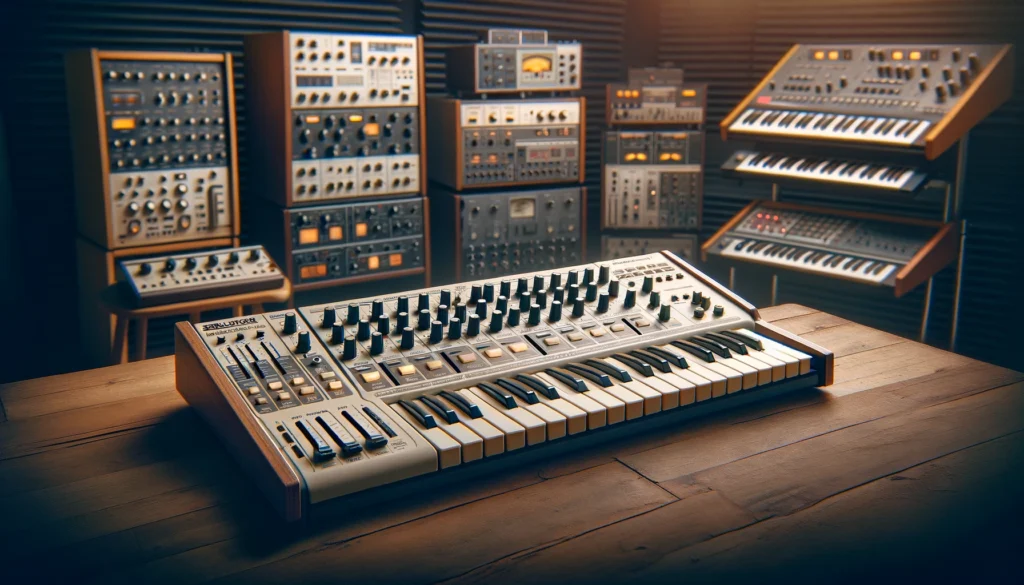
A MIDI controller is a hardware device that allows musicians to control MIDI-enabled devices like synthesizers, samplers, and digital audio workstations through physical manipulation rather than programming.
Controllers translate human actions like key presses, knob twists, and slider adjustments into MIDI data that computers can understand.
A MIDI controller serves as the critical physical interface between the musician and the MIDI instrument or software.
Instead of having to digitally program tons of parameters to shape a sound, a hardware controller allows intuitive, tactile control over things like pitch bends, modulation, volume levels, synth patches, and more.
This helps bring back the hands-on aspect lost with digital music gear.
Early Days of MIDI and Controllers
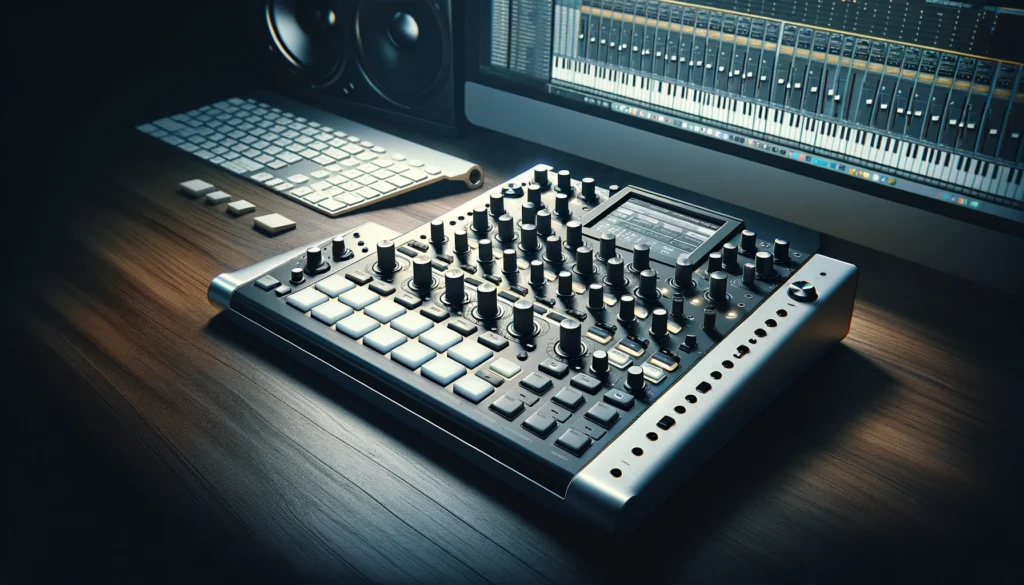
The MIDI (Musical Instrument Digital Interface) specification was first published in 1982.
It provided a standard protocol that allowed electronic instruments from different manufacturers to communicate with each other and with computers.
This interoperability ushered in a new era of digital music gear.
In the early days, MIDI synthesizers, samplers, and other gear were programmed digitally using intricate parameters and values.
This method of sound design was complex, abstract, and rather un-intuitive for musicians accustomed to hands-on control.
The solution was to introduce hardware MIDI controllers that could manipulate the digital instruments in real-time.
The First Widely Adopted MIDI Controller
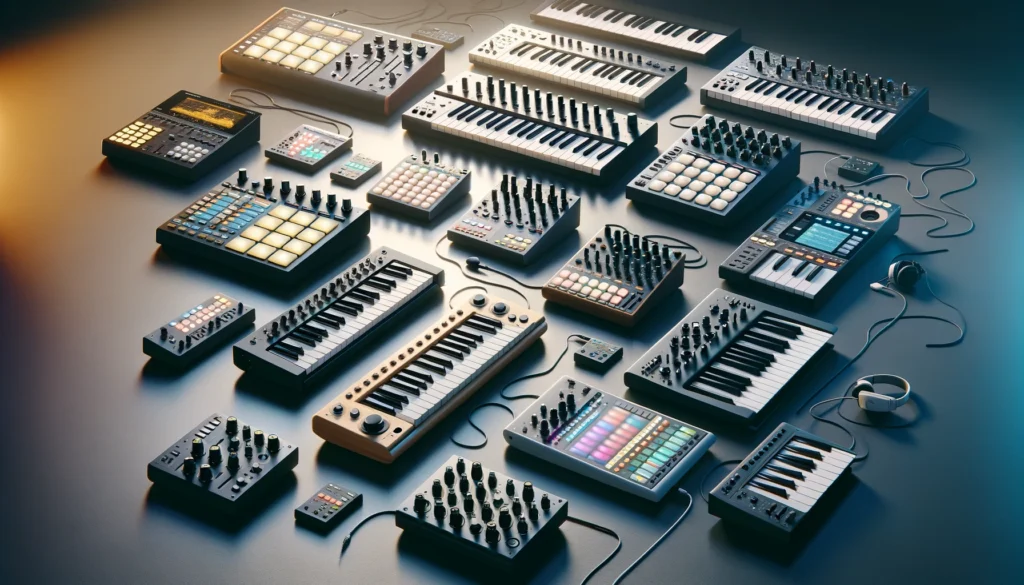
In 1983, Sequential Circuits released the first commercial MIDI keyboard controller called the Six-Trak.
The Six-Trak keyboard had assignable knobs, sliders, and wheels that allowed users to tweak parameters and shape sounds in real-time while playing.
This provided a much-needed analog control surface to manipulate the new world of digital sound creation.
The Six-Trak essentially set the stage for modern MIDI controllers.
Instead of having to halt playing to type in new parameter values, musicians could now achieve dynamic sound manipulation on-the-fly.
The Six-Trak highlighted the powerful human/machine collaboration possible with external MIDI controllers.
This began a movement away from the menu-diving, Oberheim/LinnDrum style of digital instrumentation.
Evolution of MIDI Controllers
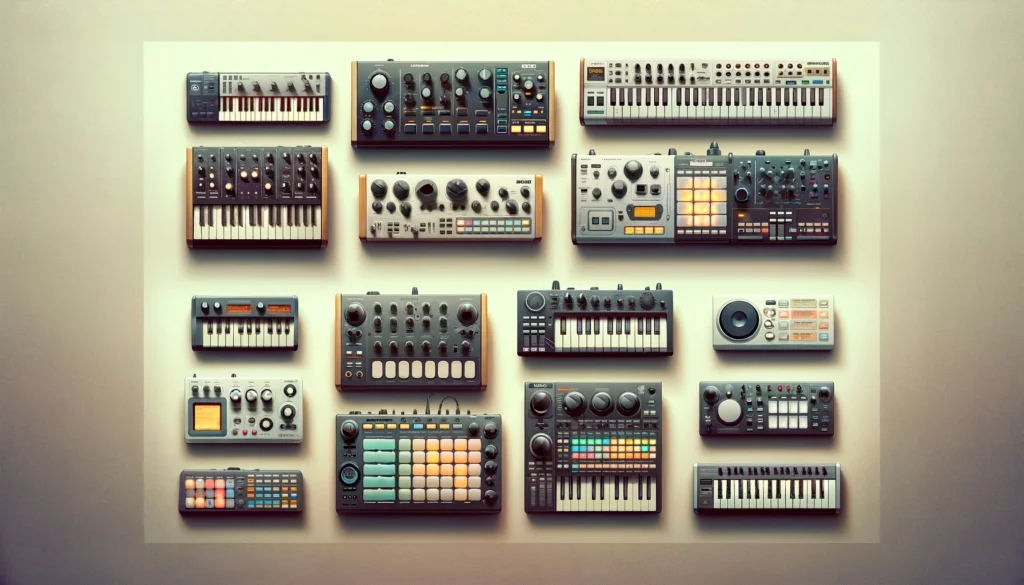
In the years since the introduction of that first sequencer-based MIDI controller, external controllers have exploded in diversity and application.
Whereas the Six-Trak only had a handful of knobs, modern controllers integrate intricate matrices of buttons, knobs, and sliders tailored to software control.
Here are some of the major developments in MIDI controller evolution over the past few decades:
Specialized Keyboard Controllers
While early MIDI keyboards like the Six-Trak set the stage, modern master keyboards focus squarely on control flexibility.
Contemporary controllers offer mods like pressure/velocity sensitive keys, precision pitch/mod wheels, and auxiliary buttons above the keybed.
High-end keyboard today provide precise piano/EPM emulation unmatched in hardware past.
Pad Controllers
Pad controllers do away keys altogether and focus on playable step-sequencer style pads.
Popularized by Akai’s iconic MPC series, pad controllers provide an intuitive way to sequence beats, trigger samples/one-shots, and manipulate software instruments in real-time via velocity/pressure sensitive rubber pads.
Modern pad controllers offer deep integration with DAWs for dynamic drum programming and live performance.
Some also have onboard synthesizers for stand-alone production away from the computer.
Wind Controllers
Wind controllers track breath and mouth position to emulate brass/woodwind instruments.
First introduced in the mid-1980s, they allow players to manipulate synthesizers using natural performance gestures on a pipe-like controller.
Modern versions use ultra-precise sensors to capture nuanced articulations.
Creative/DJ Controllers
All-in-one controllers designed for live performance and song creation also emerged.
Units like the Novation Launchpad use grids of tactile buttons to sequence beats, trigger clips, and remix songs on the fly.
DJ style rotary mixers hearken back to turntables for familiar, hands-on software control.
In summary, over 35+ years MIDI controllers evolved from crude synthesizer accessories to sophisticated, specialized instruments in their own right.
They are now available for all genres/applications in a variety of form factors.
Today’s controllers integrate tightly with software to enhance workflow and unlock creative possibilities.
For the modern computer-based musician, a dedicated hardware controller provides the hands-on element lost with mouse/keyboard interaction.
As we’ve seen, this helps bridge the gap between human performers and digital instruments.
What started in 1983 with Sequential Circuits’ Six-Trak spawned an industry-wide shift towards tactile control over software.
Musicians could manipulate virtual instruments as dynamically as traditional hardware.
No programming required.
This overview covers the key developments in MIDI controller history – from early keyboard interfaces to today’s application-specific models.
Over three decades of innovation optimized controllers for natural software control.
Looking ahead, musicians can expect ever-tighter computer/hardware integration for more creative, intuitive workflows.
Conclusion
In conclusion, Sequential Circuits’ trailblazing Six-Trak keyboard introduced musicians to the creative possibilities of tactile MIDI control in 1983.
Over the following decades, controllers greatly expanded in diversity and application tosuit any genre.
Today they are essential tools for computer-based music production and performance.
Whenever you tweak a synth sound or launch clips with pads, you have early MIDI pioneers like the Six-Trak to thank for unveiling this new world of human/computer collaboration.
